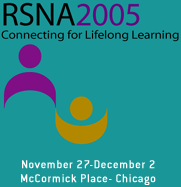
Abstract Archives of the RSNA, 2005
SSE01-01
The Ability of Microcalcification Descriptors in the BIRADS 4th Edition to Stratify the Risk of Malignancy
Scientific Papers
Presented on November 28, 2005
Presented as part of SSE01: Breast (Mammography)
Elizabeth Suzanne Burnside, Presenter: Nothing to Disclose
Gale A. Sisney MD, Abstract Co-Author: Nothing to Disclose
Daniel L. Rubin MD, Abstract Co-Author: Nothing to Disclose
Jennifer E. Ochsner MD, Abstract Co-Author: Nothing to Disclose
Kathryn Fowler, Abstract Co-Author: Nothing to Disclose
The Breast Imaging Reporting and Data System (BI-RADS) lexicon categorizes coarse heterogeneous and amorphous microcalcifications as “intermediate concern” and fine pleomorphic and fine linear microcalcifications as “higher probability of malignancy.” We aim to evaluate whether the categorization of suspicious microcalcifications in BI-RADS is supported by clinical data.
We retrospectively analyzed 112 consecutive image-guided biopsies performed for microcalcifications detected and deemed suspicious by radiologists between November 2001 and October 2002. Screening and diagnostic mammograms (including magnification views) performed prior to the biopsy were analyzed in a blinded manner by a subspecialty trained breast imager who recorded descriptors according to the BI-RADS lexicon (4th Edition) on a checklist. Pathologic data from ultimate surgical therapy and clinical follow-up was used as the gold standard for malignant and benign cases respectively. The proportion of malignant cases was used as the outcome variable to evaluate the ability of the descriptors to capture the risk of malignancy as categorized in BI-RADS.
The positive predictive value of biopsy in our population was 22.8%. Each of the calcification descriptors was able to further stratify the probability of malignancy. The risk of malignancy for distinct microcalcification morphologies were as follows: course heterogeneous 7.1% (1/14); amorphous 13.3% (4/26); fine pleomorphic 27.6% (8/21); and fine linear 55.0% (11/20). Fisher’s exact test revealed a statistically significant difference among these groups (p < .005).
The microcalcification descriptor categories in the BI-RADS 4th edition appear to appropriately stratify suspicious microcalcifications into intermediate and higher probability of malignancy groups.
Burnside, E,
Sisney, G,
Rubin, D,
Ochsner, J,
Fowler, K,
The Ability of Microcalcification Descriptors in the BIRADS 4th Edition to Stratify the Risk of Malignancy. Radiological Society of North America 2005 Scientific Assembly and Annual Meeting, November 27 - December 2, 2005 ,Chicago IL.
http://archive.rsna.org/2005/4406171.html

